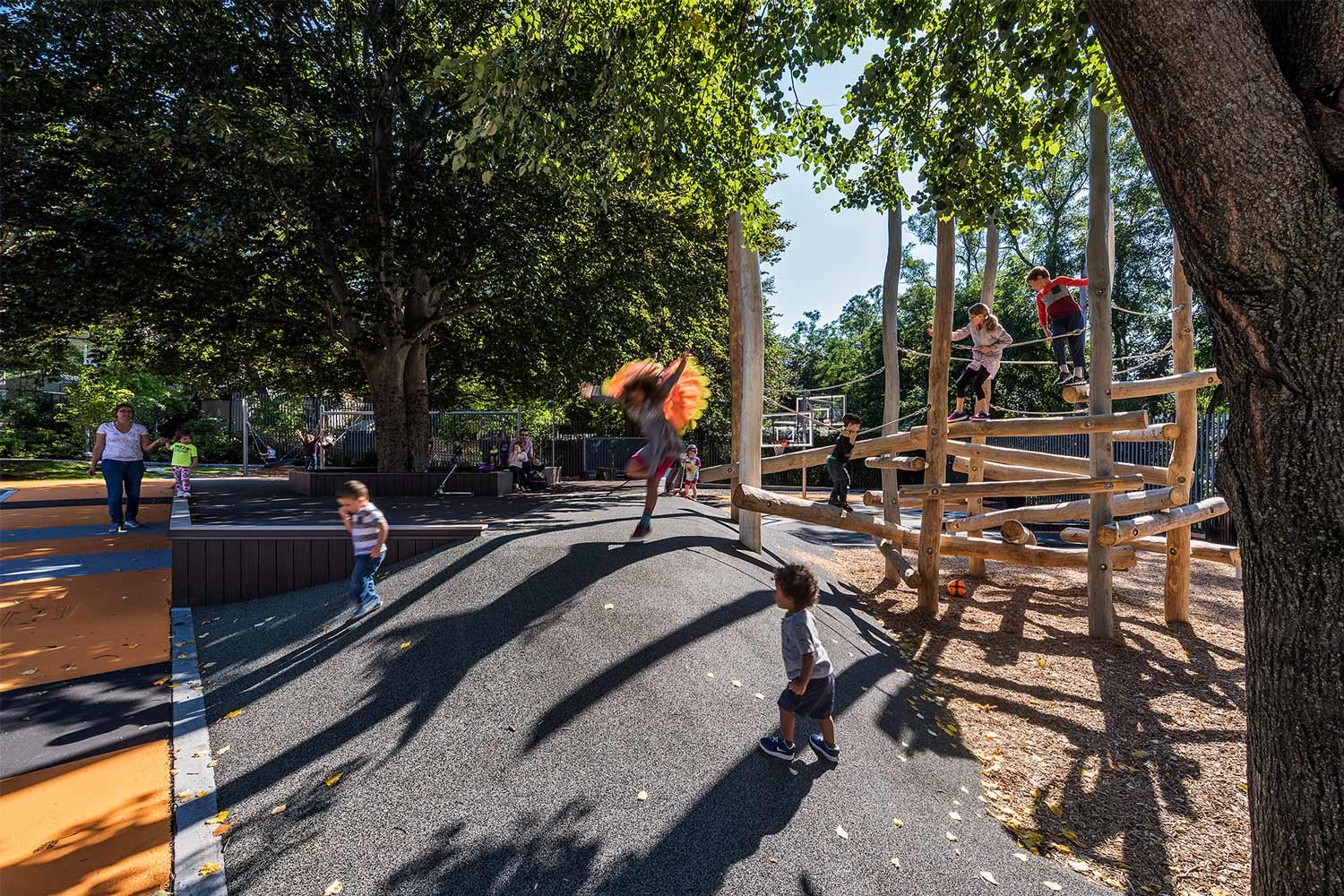Playfulness in the Public Realm
Hoyt Sullivan Park | Somerville, MA
Children have an innate ability to find ways to play even when simply moving through space. It's more complex for adults because, according to the National Institute for Play, adults can't access a play state as readily as children. At KMDG, we believe play is an essential aspect of human nature, and we all lose out when we limit play to the traditional boundaries of the playground or to children. Play is also good for us and offers these benefits:
Stress Reduction: Playful activities can reduce stress levels in adults. Playful experiences trigger the release of endorphins, which help alleviate stress and promote relaxation.
Mental Health Boost: Engaging in play can enhance cognitive function and improve mental well-being. Play stimulates creativity, problem-solving skills, and adaptability in adults.
Social Connection: Play promotes social interaction and strengthens social bonds among adults. Playful experiences encourage teamwork, cooperation, and communication skills, essential for building and maintaining relationships.
Emotional Well-being: Playful activities can uplift mood, increase positive emotions, and reduce symptoms of depression and anxiety in adults.
Children effortlessly transform walls into balance beams and view every seat as a platform for jumping. From observing how people use landscapes we design, we also know that adults will participate in playful behaviors, particularly when following the lead of children they’re caring for.
When starting a new project, we typically ask, can we expand play opportunities in this space and make it multigenerational? Below are some ways we achieve the goal of play for all ages.
Integrating Play into the Urban Fabric:
With its initiative to create a playful public realm, Cambridge offers excellent examples of how landscape architects can integrate playfulness into the urban fabric. For instance, the Kendall Main Street project featured large star-shaped concrete benches and we’ve observed children and their adults jump from one to another like stepping stones. In East Boston's Central Square, an elliptical wall that varies in height and slope wraps the lawn, encouraging people to walk along its edges. By designing functional elements that also encourage play, we can cater to children's instincts while enhancing the overall experience for everyone.
Embracing Episodic Play:
Episodic play involves creating multiple destinations within a larger park or public space that offer unique play opportunities. By introducing these episodic elements, we can extend playful experiences beyond typical designated play areas and draw people to use the entire public space. The train viewing platform punched through the fence at Hoyt Sullivan Park and overlooks railroad tracks and creates a destination for parents and children to watch MBTA trains roll by. Our work at Fisher Hill Reservoir Park is another example of this approach. In addition to a climbing structure and embankment slide, the park incorporates an engineer's stair that leads to a scenic overlook platform, allowing children and adults to ascend to a higher vantage point playfully.
Color, Scale, and Texture:
Beyond physical play elements, color, scale, and texture can create a different kind of fun and playfulness within public spaces. In the City of Lawrence, the Lawrence Connector features patterned asphalt surrounded by vibrant murals. The project transforms a passageway that once made people feel unsafe into an inviting and enjoyable space. For a temporary landscape at an MIT maintenance facility, an installation of oversized panels of colored chain link mesh creates a sense of whimsy in an otherwise mundane environment.
The Power of the Unexpected:
To foster a sense of discovery, incorporating unexpected features in public spaces can create delightful surprises for visitors. Public art installations, which often embody elements of surprise and wonder, contribute to the playfulness of the urban environment. In Inman Square, a large deer sculpture by artist Mark Reigelman adds an element to the streetscape that invites interaction and curiosity. The offset plates of weathered steel play with light and shadow in varying ways throughout the day and provide surfaces for snow to collect artfully in the winter.
For me, the desire to find opportunities for playfulness in the public realm is motivated by watching my children experience the world and appreciating how they see and explore things differently from how adults typically do. It's that simple emotion of joy that our team strives to cultivate in our work.

